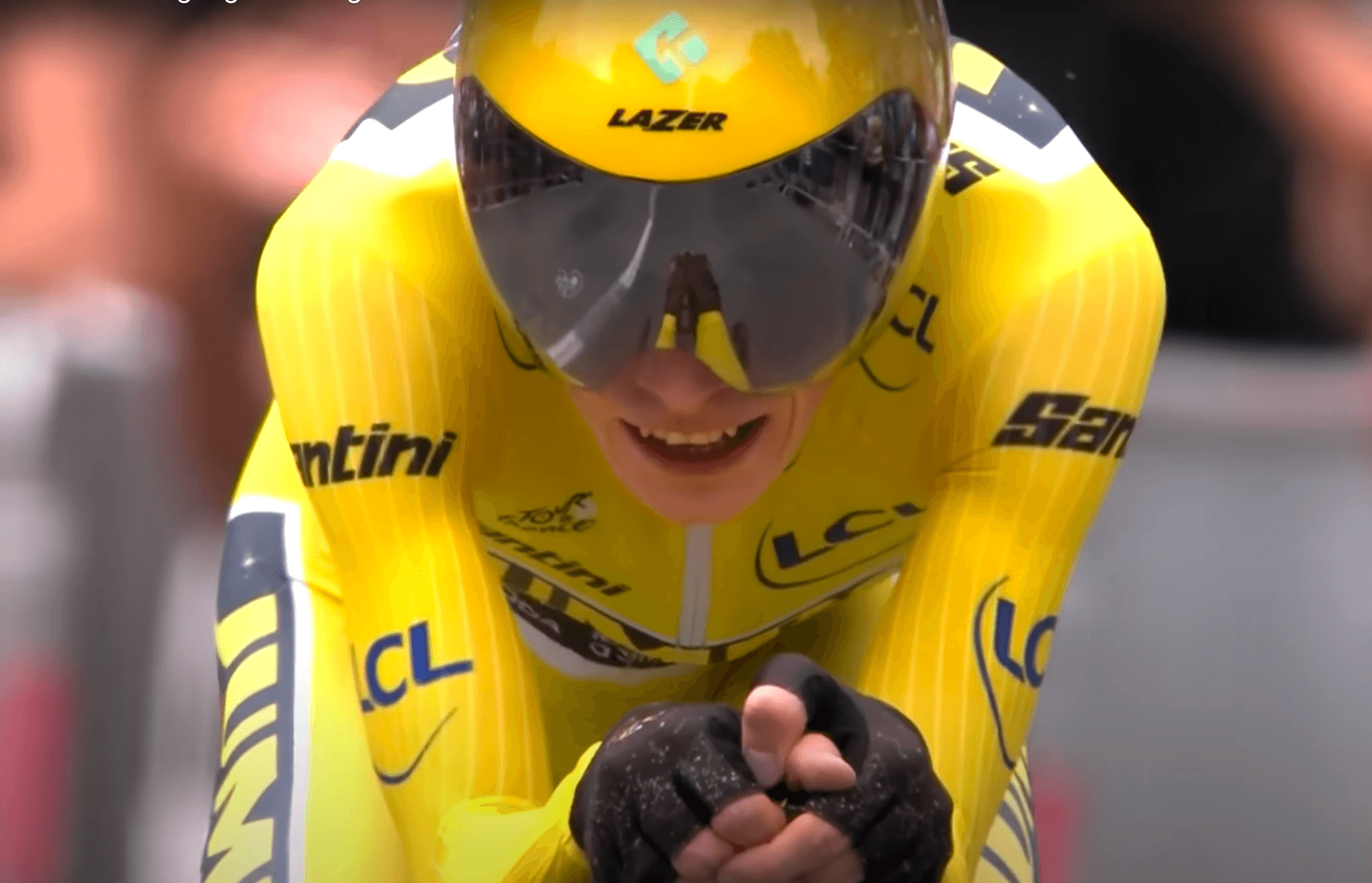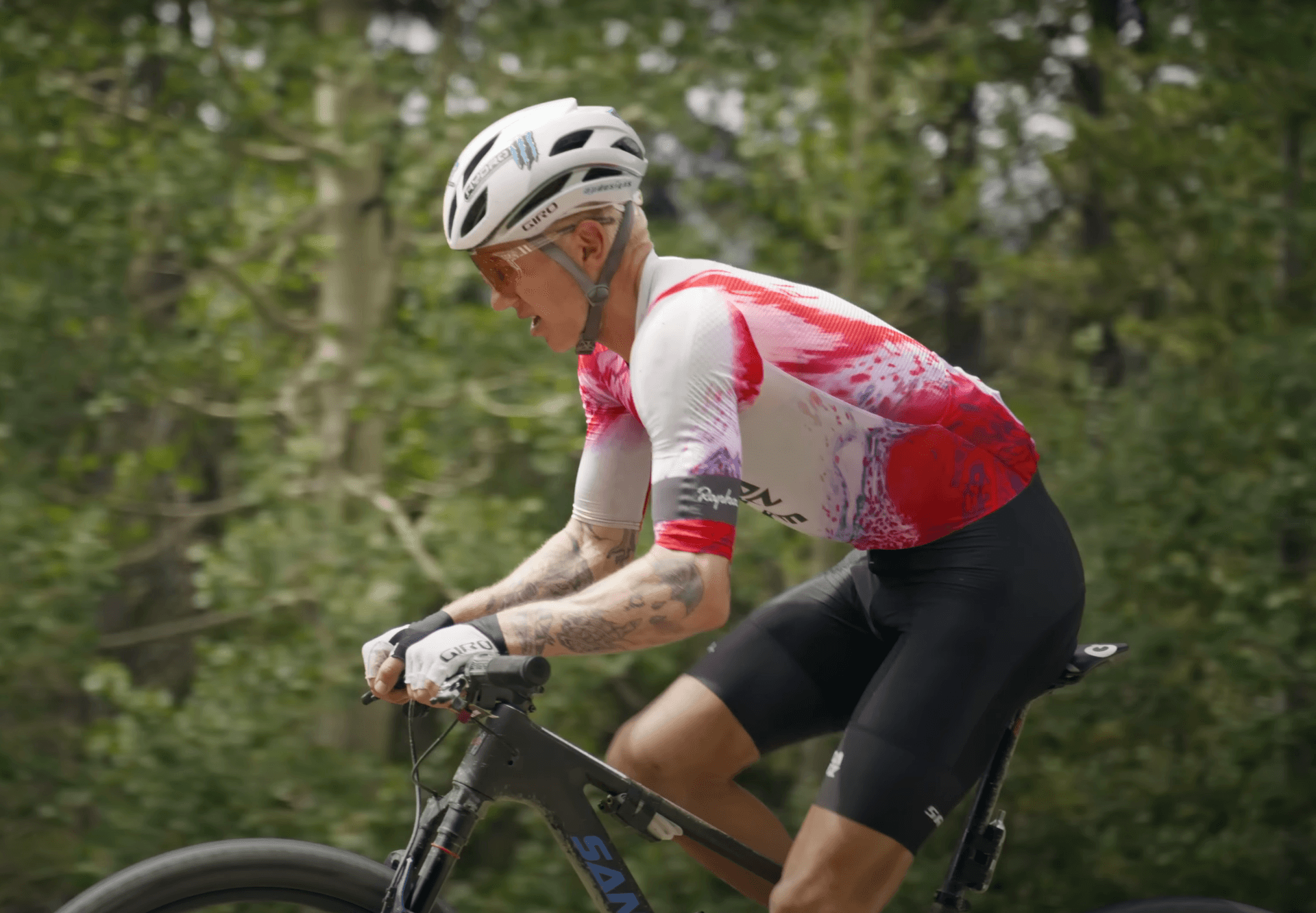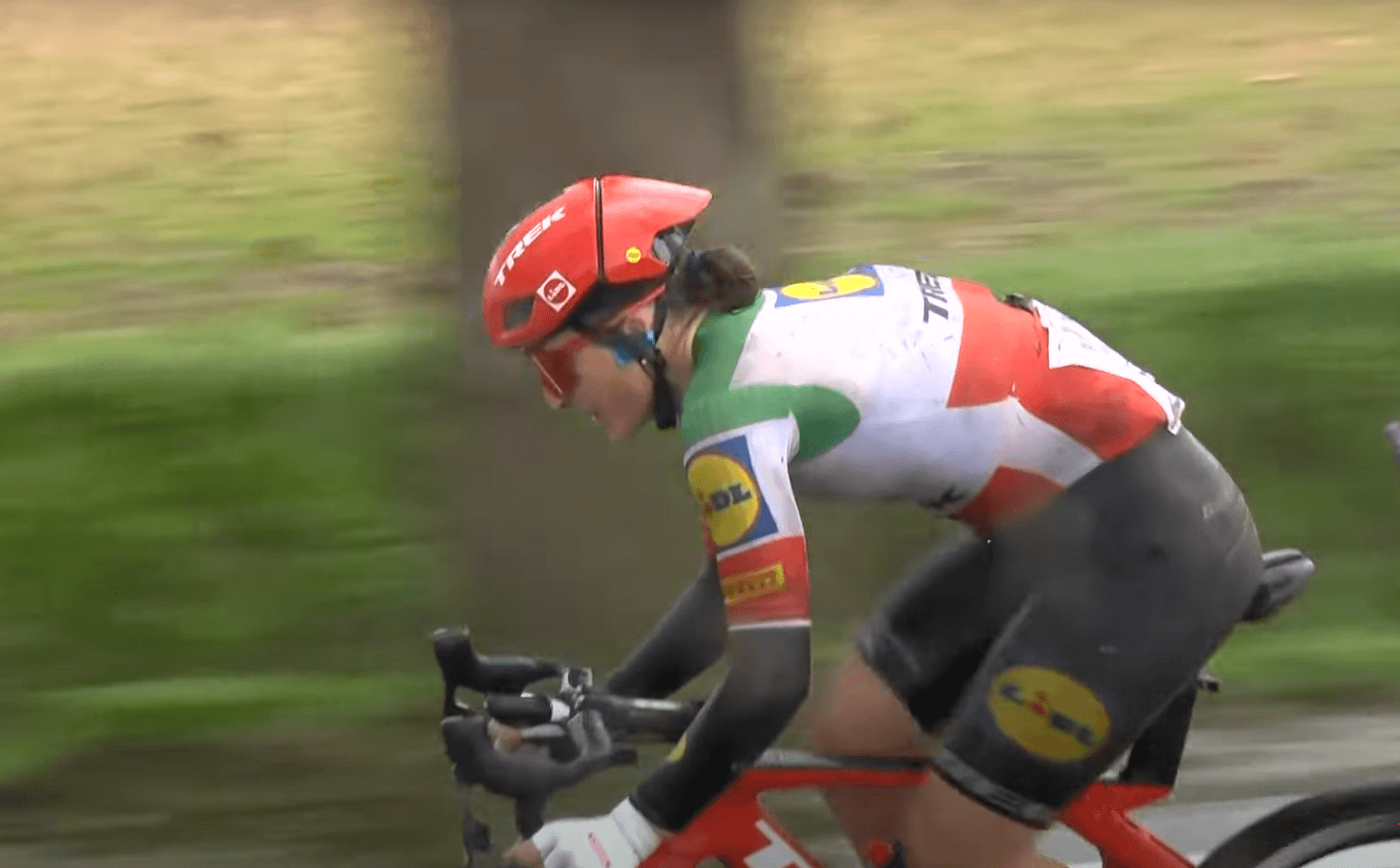In this year’s thrilling edition of Gent-Wevelgem, fans were treated to an exceptional solo performance by Denmark’s Mads Pedersen. Launching his decisive move on the Kemmelberg—an iconic climb 56 kilometers from the finish—Pedersen rode away from the lead group and never looked back, sealing the longest solo victory in the race’s history since 1985.
While much has been said about his raw power and tactical brilliance, this article focuses on a different aspect: his position on the bike. With the help of broadcast footage, still images, and the Bikefit Simulator app, we take a closer look at the details of Pedersen’s fit and riding posture that helped power him to victory.
Bike Setup
Trek released a detailed tech article covering Mads' race-day rig, and it gives us great insight into his choices for the cobbled classics.

Here’s a quick breakdown of his ergonomic setup:
- Frame: Trek Madone SLR 8, size L (58cm)
- Crank Arm Length: 172.5mm
- Stem: 130mm, -17° angle (very steep!)
- Handlebars: 370mm width
- Seatpost Offset: 0mm
What immediately jumps out here is the -17° stem angle—a rare sight in pro pelotons, especially on integrated setups like the Trek Madone. Trek doesn't offer this stem angle in their standard integrated cockpit, leading to some speculation. It’s possible it’s either a custom piece or a typo in Trek’s article.

I tried to verify this by uploading images of his bike into our modeling system, but even then, some things didn’t quite add up. The geometry from static photos didn’t perfectly align, I beleive Bontrager's RSL integrated bars have a 13mm spacers incorporated at the base of their stem design. Adding that was the only way I could make it work.
Rider
According to ProCyclingStats, Mads Pedersen is 1.80m tall. That places him just at the bottom edge of Trek's size recommendation for the size L Madone, which is designed for riders between 179–188 cm.
That alone is notable—many pros opt to size down for more aggressive setups. However, in Pedersen’s case, it makes sense when you consider saddle height: his estimated saddle height (based on race imagery) falls between 790–795mm, which exceeds the maximum supported height for the "ML" frame size (762mm). So, the size L frame choice may have been made to accommodate that longer leg extension while maintaining balance and reach.
Position
One of the best things about solo wins is the camera time they give us. Riders are filmed head-on, side-on, and from behind for extended periods, providing great material for position analysis.
Using a clear profile shot, I recreated Pedersen’s position in our Bikefit Simulator. I adjusted his avatar to match body dimensions and the bike geometry as closely as possible. Only one base parameter was tweaked—elbow bend was set to 69°, which aligned best with his riding footage.

Interestingly, the default ankle range of motion in the simulator lined up well with what we saw from his pedal stroke.
A Note on Image Modeling
If you noticed the mismatch between the model's foot angle and the background image—good eye. But here’s why that happens: when modeling from 2D images, camera lens distortion plays a major role in warping angles and positions.
In this case, the photo was likely taken with a medium focal length lens from about 6–7 meters away, which still introduces slight distortions. To get around this, I analyze images plane by plane, moving through the body’s sagittal axis and evaluating each segment in isolation.

This method lets us minimize error and generate more accurate 3D interpretations from flat images.
Bike Fit Results
Let’s dive into the key takeaways from the Bikefit Simulator:
Results
Here are the main points that stood out to me.
1. Closed hip angle
Pedersen’s hip angle at the top of the pedal stroke measured just 49.5°, very different than other pros such as Tadej Pogacar for example.
This has a few implications:
- It indicates a very aerodynamic posture, optimized for slicing through the wind during long efforts.
- Maintaining power output with such a closed hip requires outstanding flexibility and core stability—a reminder of Pedersen’s physical conditioning.
- It also suggests a slightly more rearward saddle or relatively low handlebar stack, which helps fold the torso down over the legs. (hence the -17° stem angle)
Many riders would struggle to put out sustained power in this configuration, which is why a Fitscore result of 52 makes sens, but for someone like Pedersen, it clearly works.
2. Superman arm position
The most striking things about Pedersen’s fit is his extremely high arm angle at the shoulder joint, even when corrected for a 15° elbow bend (which is what the algorithm does when calculating Fitscores). It’s possibly the highest I’ve seen in the pro peloton.

Why?
- Super long effective reach thanks to a long stem and stretched top tube.
- Conservative seat angle (~74.5° effective), which pulls the rider slightly rearward.
This runs counter to the recent trend in pro bike fitting, which has favored steep seat angles and short front ends to compress the rider's posture forward.
Conclusion
Mads Pedersen’s position is a study in power-first ergonomics. Unlike the compact and hyper-aggressive setups favored by many riders, his fit emphasizes long levers, stable handling, and efficient force transfer. The long frame, long stem, narrow bars, and high saddle combine to create a platform built for diesel-engine endurance and power.
His Gent-Wevelgem win wasn’t just about strength—it was about optimizing every aspect of the fit to support an hour-long solo push through crosswinds, cobbles, and climbs.
In a sport where millimeters can decide races, this win was as much about the setup as it was about the legs.



